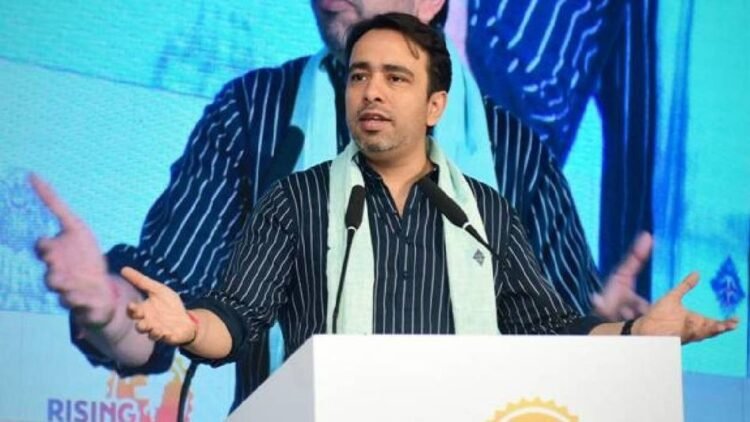NEW DELHI (India CSR): Himachal Pradesh has achieved a historic milestone, becoming the fourth Indian state to attain full functional literacy, following Tripura, Mizoram, and Goa, as announced during International Literacy Day celebrations on September 8, 2025. This remarkable feat, celebrated at an event organized by the Ministry of Education, underscores the transformative power of digital infrastructure and community resilience in overcoming geographical barriers. With India’s literacy rate climbing to 80.9% in 2023-24, Himachal’s success highlights the nation’s strides toward inclusive education, setting a global example for the power of collective determination.
A Triumph Over Terrain
Himachal Pradesh’s journey to 100% functional literacy is particularly inspiring given its challenging mountainous terrain, which often limits access to schools and resources. Minister of State for Education Jayant Chaudhary, speaking at the New Delhi event, praised the state’s achievement, noting, “Communities, volunteers, and governments worked tirelessly to make this possible.” The state’s success builds on the Understanding of Lifelong Learning for All in Society (ULLAS) Nav Bharat Saaksharta Karyakram, which has enrolled over 3 crore learners nationwide, with 1.83 crore completing foundational literacy and numeracy assessments at a 90% success rate. Himachal’s decentralized education model, including 1,200 mobile learning centers, played a key role, per a 2025 Ministry report.
Digital Innovation as a Game-Changer
India’s Digital Public Infrastructure (DPI) has been instrumental in accelerating literacy gains, with platforms like DIKSHA and e-Pathshala delivering content in 26 Indian languages. Chaudhary highlighted that innovations like QR-coded textbooks and virtual classrooms have condensed decades of progress into just 10 years. “What might have taken 50 years, India achieved in a decade through digital tools,” he said. In Himachal, over 80% of rural schools now have internet access, up from 45% in 2020, enabling 2.5 lakh students to access online learning resources in 2024-25, according to state education data. This digital push has made literacy inclusive, reaching even remote tribal areas like Lahaul-Spiti.
ULLAS Program Drives Nationwide Impact
The ULLAS initiative, launched under the National Education Policy 2020, has been a cornerstone of India’s literacy surge, with 42 lakh volunteers mentoring learners across diverse demographics. Union Education Minister Dharmendra Pradhan, addressing the event virtually, emphasized, “True progress lies in making literacy a lived reality for every citizen.” The program’s multilingual materials, tailored to India’s linguistic diversity, have empowered marginalized groups, with 65% of learners being women and 30% from SC/ST communities. The release of the ULLAS Compendium on September 8, showcasing culturally relevant teaching aids, further celebrates India’s rich heritage while promoting digital literacy.
Inspiring the Global South
India’s literacy achievements are setting a benchmark for the Global South, as noted by Chaudhary. With Ladakh becoming the first Union Territory to achieve full literacy in June 2024, and states like Himachal leading the way, India’s model of combining digital tools with grassroots efforts is gaining international attention. UNESCO’s 2025 Education Report praised India’s DPI, citing its role in enrolling 1.2 crore out-of-school adults in literacy programs since 2022. Social media on X buzzed with pride, with users hailing Himachal’s milestone as a “blueprint for inclusive education,” though some called for sustained efforts to ensure lifelong learning.
Challenges and the Road Ahead
Despite the progress, challenges remain, particularly in sustaining literacy gains and addressing urban-rural disparities. Himachal’s success, driven by 15,000+ volunteer-led literacy camps in 2024, faces hurdles in ensuring employability through advanced skills training. The state plans to integrate vocational courses into ULLAS by 2026, targeting 1 lakh youth in sectors like tourism and IT, per the Himachal Economic Survey 2025. The national literacy rate, up from 74% in 2011 to 80.9% in 2023-24, still lags behind the 100% target set for 2030, with states like Bihar and Uttar Pradesh needing accelerated efforts. The Ministry is exploring AI-driven literacy apps to bridge this gap, with pilots planned for 2026.
A Legacy of Learning
The International Literacy Day theme, “Promoting Literacy in the Digital Era,” resonated strongly at the event, attended by Tripura’s Education Minister Kishor Barman and Mizoram’s Vanlalthlana. Himachal’s milestone reinforces India’s commitment to education as a tool for empowerment, with 1.4 crore new literates added in 2024 alone. As the nation celebrates this achievement, the focus shifts to sustaining momentum through teacher training and digital access, ensuring literacy translates into economic and social progress. With a follow-up ULLAS review scheduled for December 2025, India is poised to inspire global education reforms.
(India CSR)







